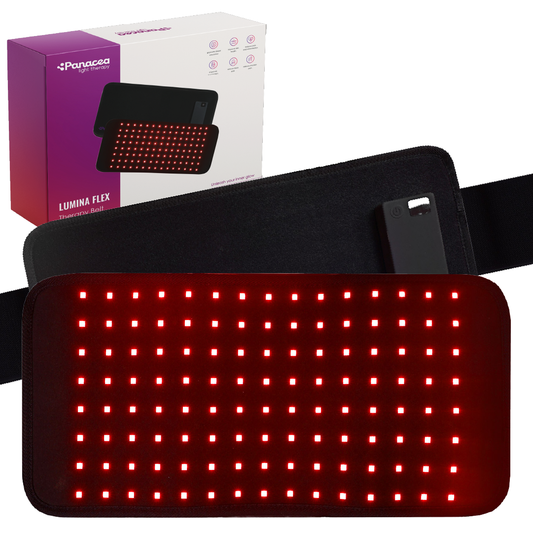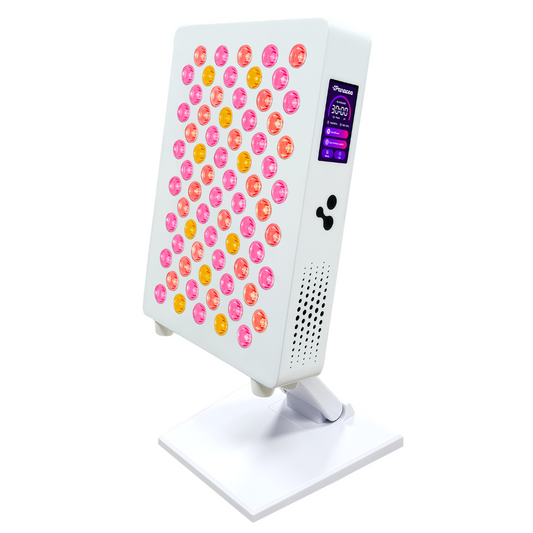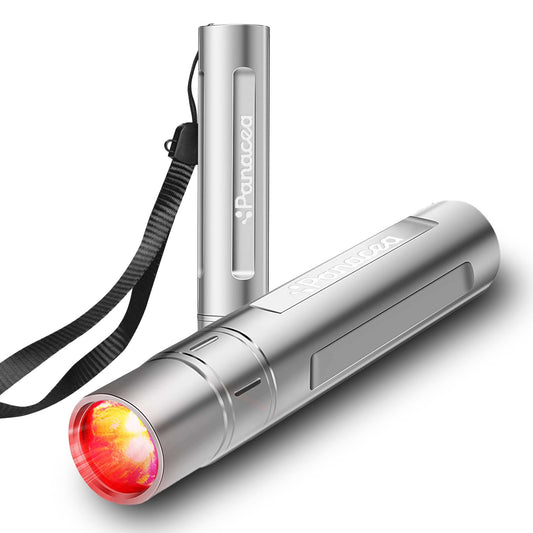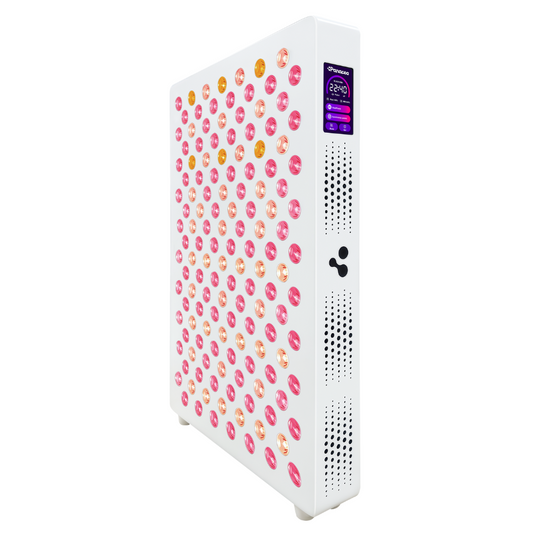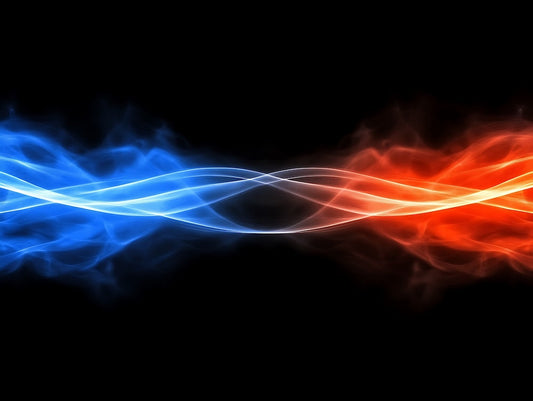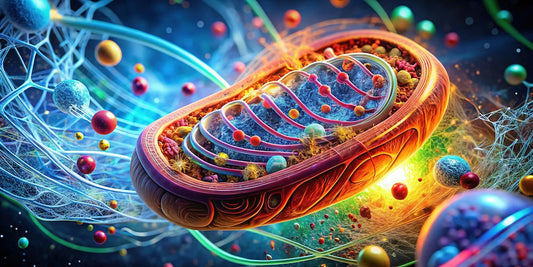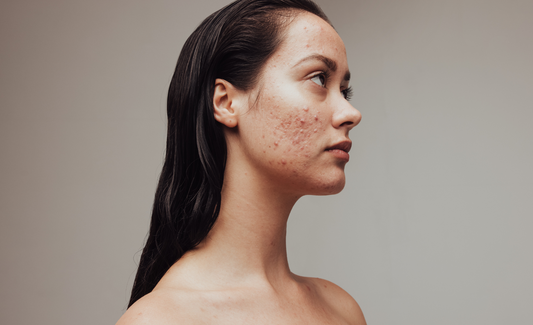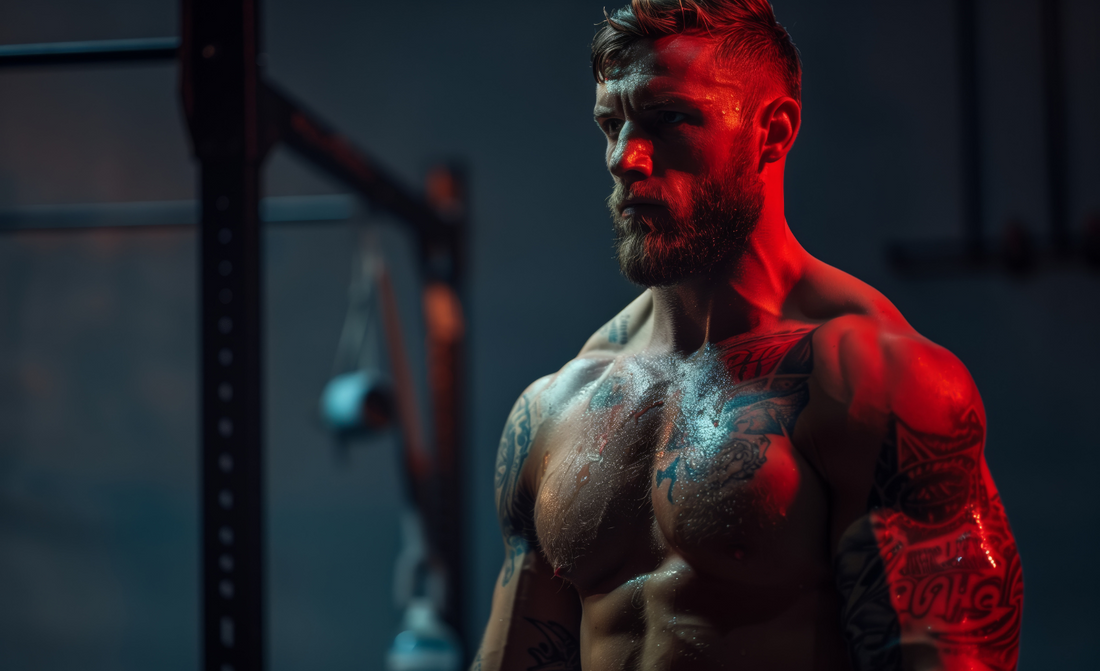
Red Light Therapy for Muscle Building and Fitness: The Power of Light Down to the Cellular Level
Share
In the world of fitness and muscle building, we are exposed to a daily barrage of trends, supplements and techniques. But what if one of the most powerful methods to improve muscle recovery, growth and performance is not a pill or a workout plan, but light?
Welcome to the world of red light therapy , or as science calls it: photobiomodulation . A fascinating technology where specific light waves help heal, strengthen and improve the human body. In this blog we take you into the scientific world behind red light, with a special focus on muscle building and the role of different wavelengths , including techniques such as pulsing .
What is red light therapy?
Red light therapy is a non-invasive treatment that uses low-intensity light to target the body. It uses specific wavelengths in the red (630–660 nanometers) and near-infrared (810–1060 nanometers) spectrum . These light waves penetrate the skin and reach deeper tissues, including muscle, connective tissue, and even bone.
The key to its action lies within our cells, specifically the mitochondria – the body’s powerhouses. When mitochondria are exposed to red or near-infrared light, they increase their production of adenosine triphosphate (ATP) . ATP fuels virtually every biological process in the body, including muscle contraction, repair and cell renewal.
Red Light and Muscle Building: What Does Science Say?
Several studies show that exposure to red light directly contributes to muscle hypertrophy (growth of muscle mass), recovery after training and reduction of muscle fatigue. This occurs via several mechanisms:
- Increased ATP production: More energy means more efficient recovery and growth.
- Reduction of inflammation: Red light inhibits inflammatory factors that hinder muscle growth.
- Stimulation of muscle stem cells (satellite cells): Essential for muscle regeneration.
- Improved blood circulation: More oxygen and nutrients reach the muscle tissue.
In a review by Salehpour et al. (2019), it was found that 660 nm and 810 nm light effectively penetrate muscle and brain tissue, with remarkable results on cell activity and repair.
Read the research here
The power of wavelengths: 630 nm to 1060 nm
Each type of red or near infrared light has a different effect, depending on the depth at which it penetrates the body. Below is an overview of the most commonly used wavelengths in red light therapy:
| Wavelength | Effect |
|---|---|
| 630 nm | Very superficial, stimulates skin repair, collagen production and local inflammation inhibition. |
| 660 nm | Deeper penetration than 630nm, ideal for muscle recovery and mitochondria stimulation. |
| 810 nm | Penetrates deep into muscle and nerve tissue, promotes systemic recovery. |
| 850 nm | Popular with athletes; stimulates deep tissue repair and improves blood circulation. |
| 940 nm | Even deeper penetration, good for joints and deeper muscles. |
| 1060 nm | Currently being investigated for its role in fat reduction and thermal deep action. |
The combination of these wavelengths provides a broad spectrum of biological benefits, from skin rejuvenation to muscle strengthening and neurological recovery.
Pulsing: Why Flashing Lights Sometimes Work Better
Many people assume that more light is simply better. But science shows something surprising: pulsed light – where the light is switched on and off at high frequency – can be biologically more effective than constant light.
Why is that? It turns out that cells can be more sensitive to intermittent stimulation. Pulsing promotes:
- Deeper penetration into the tissue
- Less heating of the skin
- More efficient ATP stimulation at lower doses
Some studies show that pulsed 660 nm or 850 nm light at frequencies such as 10 Hz or 40 Hz can be more effective for recovery and muscle development than continuous light. This is especially interesting for athletes who regularly use red light therapy after strength training or cardio.
Practical Use for Fitness and Muscle Growth
For those looking to integrate red light therapy into their training regimen, there are a number of guidelines:
- Duration of the session: 5 to 20 minutes per muscle group
- Distance to skin: 10 to 30 cm, depending on the device
- Frequency: 3 to 5 times per week
- Combinations: Combines well with creatine, protein shakes and cold therapy
Most users notice an increase in muscle recovery and energy after 2-4 weeks of consistent use.
Conclusion: Light as a powerful tool for muscle growth
Red light therapy is not a fad, but a scientifically proven approach to help the body recover faster and become stronger. By using the right wavelengths in combination with pulsed light , it becomes possible to influence very targeted biological processes, including muscle growth, recovery and inflammation reduction.
At Panacea Light Therapy we combine the latest insights with high-quality equipment that uses precisely those wavelengths that have been scientifically proven to be effective: 630, 660, 810, 850, 940 and 1060 nanometers .
Whether you’re a keen athlete, recovering from an injury, or simply looking to take your fitness routine to the next level – light can go a long way.
Sources and further reading
- Salehpour, F., Cassano, P., & Rouhi, N. (2019). Penetration profiles of visible and near-infrared lasers and LED light through the head tissues . Photobiomodulation, Photomedicine, and Laser Surgery. Link
- Salehpour, F., Sadigh-Eteghad, S., Mahmoudi, J. (2023). Photobiomodulation for the Brain . Springer. Read via Google Books

